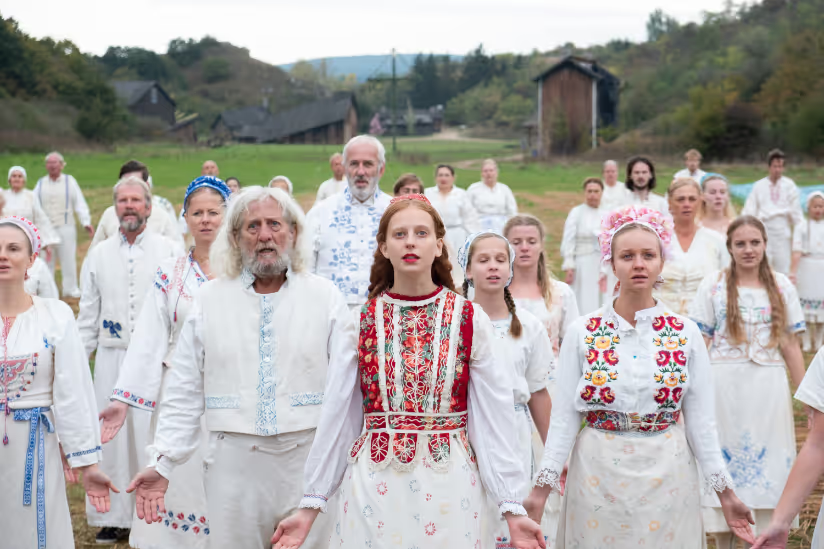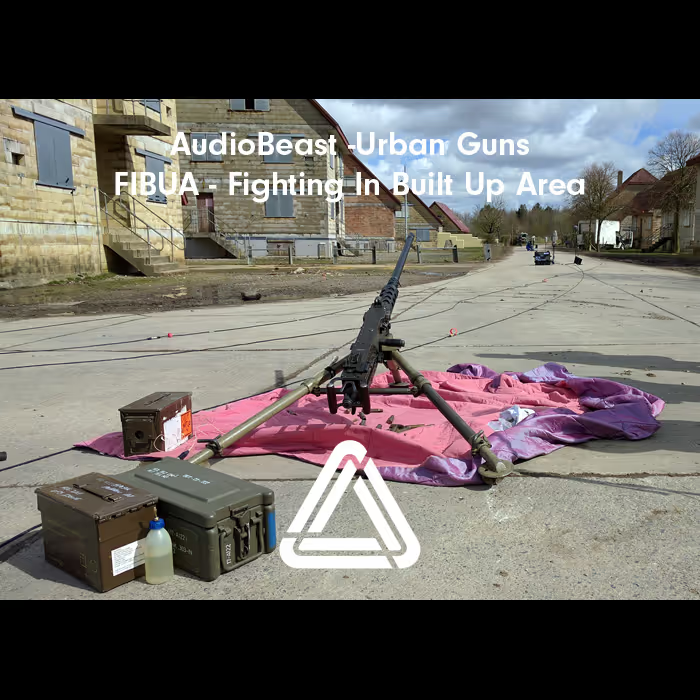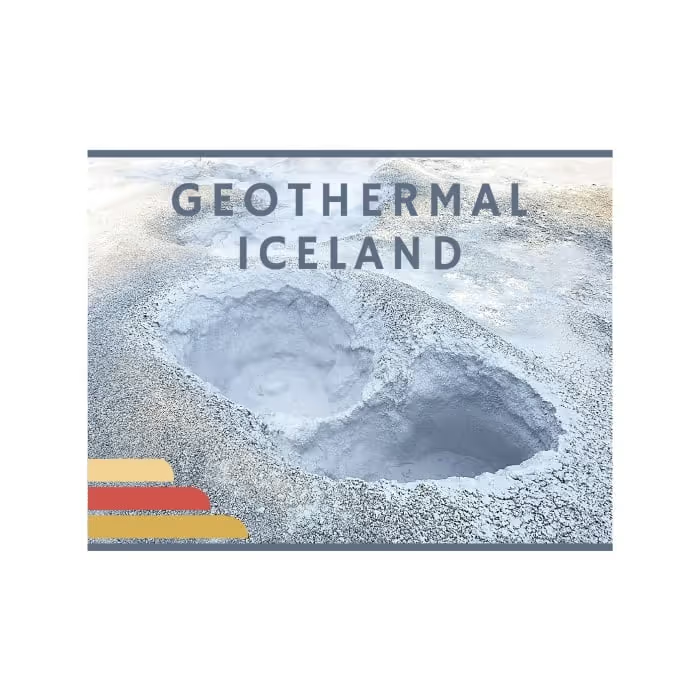The same three words that could summarize director Ari Aster’s debut film Hereditary (2018) are applicable to his latest theatrical release Midsommar. Aster has once again proven his prowess in the art of making WTF films, in the best possible way!
As with Hereditary, Aster’s Midsommar (distributed by A24) starts out as unsettling but that feeling progressively matures into full-blown perturbation. By the end, the audience is left completely disturbed. Aster’s precise, restrained use of sound plays a huge role in creating an uncomfortable atmosphere that fosters the story’s descent into insanity.
Aster tapped supervising sound editor/re-recording mixer Gene Park of Toneburst Audio in NYC. Park (who is currently collaborating with director Cory Finley on the film Bad Education starring Hugh Jackman and Allison Janney) sound supervised and mixed two other films in theaters this month: A24’s The Farewell opening Friday July 12th, and The Mountain (distributed by Kino Lorber) in theaters July 26th.
For Midsommar, Park and his team craft and deliver a soundtrack that puts the audience into the thick of this Swedish commune’s strange and ultimately deadly festival. Unexpected sonic choices — like pulling down the ambient nature sounds despite the expectation to hear abundant birds and bugs — makes the audience lean in and reinforces the disquiet produced by the increasingly questionable rituals.
Here, Park discusses how he and his team used sound to help Aster achieve such a high level of emotional discomfort and disorientation for Midsommar.
How did you meet director Ari Aster?
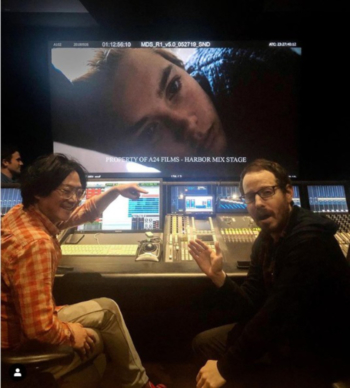
Gene Park (GP): We initially met in the autumn of 2017 for Hereditary but that ended up not working out. This time around, we got in touch again and he asked me to come on board. We had discussed Hereditary a bunch so I knew we got along vibe-wise. So for Midsommar we already had a shorthand going and I had a sense for what he was looking for. So I got a bit of a head start on this.
Working with Ari was really fun. Our relationship was very collaborative. We’d bounce ideas off of each other. Or, we’d use the ideas that we present to Ari as a springboard for exploring a different direction. The whole process was so much fun, and it’s always great to work a director who likes to be very involved with the sound design process. We took a lot of liberties with the sound and based on the feedback I’ve received from viewers, the film’s sound has really resonated with audiences.
How did Dir. Aster plan to use sound to help tell the story of Midsommar?
GP: The initial direction Ari talked about was to be as immersive as possible, utilizing the full range of the 5.1 surround setup. He wanted to explore that and push the boundaries in terms of what audiences are used to hearing and seeing. The sound effects and sound design augment the emotions that he wanted to elicit for certain moments and scenes and for the overall narrative.
I love the bold use of panning, especially during the May Queen dance competition scene. The music is panning discreetly around the theater…
GP: We spent a significant amount of time on panning, literally scrubbing frame by frame to match the camera moves. I made mark points of where the camera should exactly be in the spectrum. For one sequence, we have the music going around in circles following the camera on Dani (Florence Pugh). Once those dissolves start happening that’s when we start adding in other parts of the score to make it as disorienting as possible as Dani is “tripping balls.”
I wasn’t sure how the audience was going to react to this because it’s pretty out there in terms of mixing conventions. But so far the feedback I’ve received has been amazing.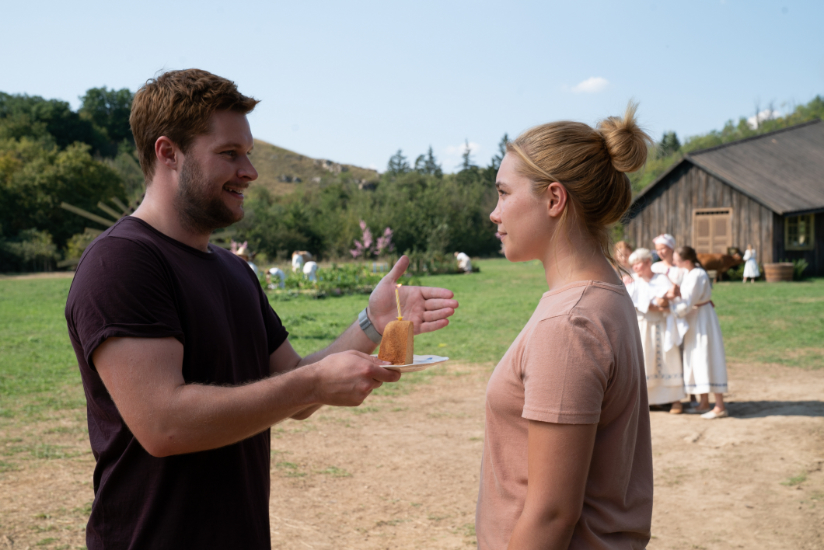
Another bold mix move was when Dani is on the phone in the beginning of the film. The sound goes to mono. Was that truly mono?
We wanted to use the full dynamic range in this film so there are some dialogue scenes where we made it feel like we sucked out all of the sound.
GP: We wanted to use the full dynamic range in this film so there are some dialogue scenes where we made it feel like we sucked out all of the sound. There’s a really quiet underlying room tone that is more felt than heard.
I saw the film twice in theaters with audiences. Taking the sound down that far pulled the audience in even more. Stripped-down sound and the lack of sound can make the film experience immersive.
We do that again when they all start tripping, while they’re sitting around that tree. It’s the same type of thing. There’s some wild stuff about to happen. If it’s quieter there then we have more room for sound later and more of a dynamic range. There’s a greater range of dynamics that we can play with. We used that to the fullest potential.
Getting these scenes to be so quiet means stripping the dialogue down to its cleanest form. How was the production sound? Did you end up doing a lot of ADR?
GP: There’s a lot of ADR, because the filming location in Hungary had an airport nearby so we weren’t able to use the boom for a lot of scenes. In a way that aided us because we were using a lot of the lav mics and could use Foley and ambiences to fill back in to taste. We did a lot of clean up on those and definitely used some ADR to augment the narrative.
A lot of time we stripped-down the dialogue to its barest elements and then built around that with sound effects and/or score.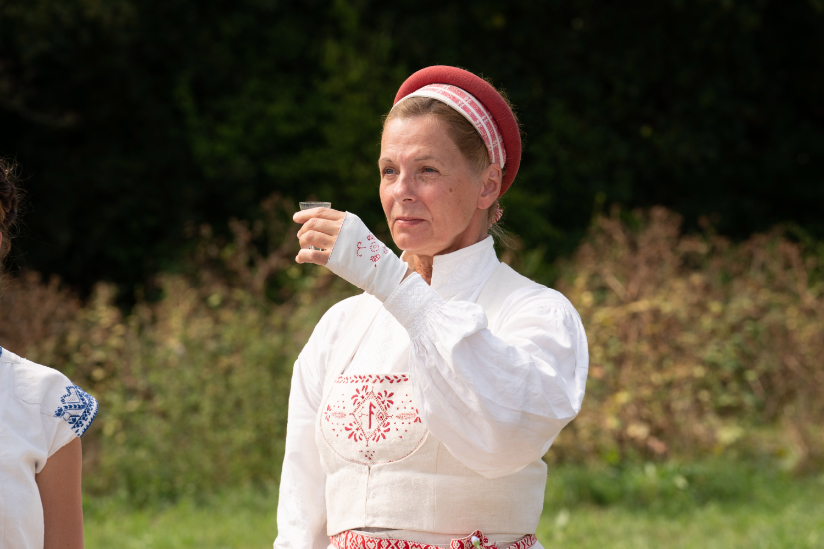
The commune is in the middle of nature and it’s summer so you expect to hear bugs and birds. But the scene in which Siv (Gunnel Fred) is about to give the welcoming speech, there’s very little ambient sound. It’s so quiet…
GP: For some of her speech there we had three mics of her and were able to get it clean. As people are approaching you hear them walking over and the music is playing. But when she’s about to speak, we started pulling out the sounds because we wanted to make the focus on her. We did some panning with her as well to match the camera angles. We see her from a distance, from where the main characters are, and then the shot switches to her back and there’s a dolly-backwards push. We played with some panning there and at points her voice wasn’t in center front; it was more in the middle and that gave her an even greater larger-than-life quality. It’s almost like she dominated all the other sounds there. When she says, “Skoal!” that brings everything back in. But, we wanted to get quieter there to make it feel like it was all about her.
In the scene before that, when they first get to the location, there is a lot of sound. There are people playing music and there are animals walking around. There is a lot of sound going on so it was a cool contrast when the camera pans around and we head to the stage and then we start pulling sounds out. We were able to use the picture edit to our advantage.
What were some other ways you used sound to help this commune feel unsettling?
GP: A lot of these sounds we re-created with Foley, so we could bring in sounds very specifically. We have people cutting the hay and hammering. These are single, isolated sounds as opposed to ambient beds. This contributed to the unsettling feeling by isolating the people in a way. You know there are people working but you get the idea that it’s a group of people who have known each other forever and have an unspoken communication. Everyone is doing their own thing. We wanted to play off that instead of having people talking and laughing the whole time since that wasn’t the effect that Ari wanted. He wanted to create the idea that this was a group of people who knew what they were doing and the visitors are dropping in and observing how they work — not knowing that they’re there for something they aren’t aware of.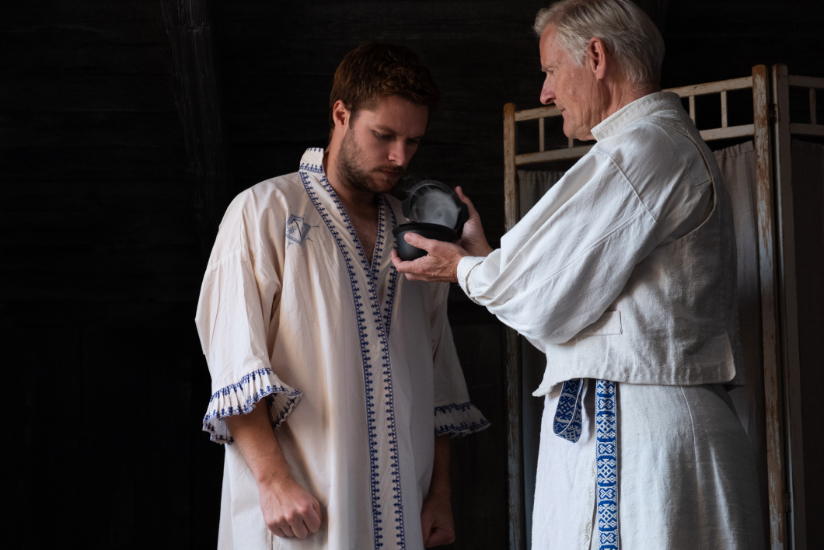
The group is tripping for a lot of the film. It starts with the mushrooms and they’re drinking special tea the whole time. The visuals do a good job of showing the wavering mountains and a tripping POV. How were you able to help enhance that with the sound work?
GP: With the mushrooms scene, we started off by making the shot around the tree very quiet, in part to create a “tripping” feeling, and also to allow more room for dynamics later on in the scene. When Pelle (Vilhelm Blomgren) starts talking about nature, that’s when we bring in breathing tree sounds. We start building from there. We use panning to emphasize the group of people laughing and playing music off to the side. There’s a hybrid thing going on where we manipulated the natural diegetic/realistic sounds and we added manipulated sound design and score to build to a claustrophobic climax which overwhelms Dani.
We tried to avoid as much non-diegetic sound as possible but when we did include it we very much wanted it to be an Alan Splet style (David Lynch’s old sound designer).
On this film, we had two great sound designers/effects editors who did an incredible job of building sounds that felt natural. We tried to avoid as much non-diegetic sound as possible but when we did include it we very much wanted it to be an Alan Splet style (David Lynch’s old sound designer). Instead of resorting to sharp jump-scare sounds, we used more underlying tones to elicit an unsettling tension. So for the first tripping scene, we built on that. We used a lot of panning of the dialogue and also echoes, up to the point where Dani goes into that bathroom hut. That’s when you start seeing the warbling effect of the backgrounds and we tried to create these sonic pulses that would match that.
For the dancing scene when everyone there is tripping, we did the same thing. We used panning of the voices and music to make it as hallucinatory as possible sound-wise.
 Tesla Model X 2015 electric full size crossover SUV sport utility vehicleKrampfstadt Studio65,00 $32,00 $51% OFF
Tesla Model X 2015 electric full size crossover SUV sport utility vehicleKrampfstadt Studio65,00 $32,00 $51% OFF
I also noticed some subwoofer effects to punctuate seemingly random moments within those tripping scenes…
GP: Yeah, we included the subwoofer effects whenever Ari was feeling the need for a pulse; we added these big swells that would cut out hard. It was an effect we were going for to further exacerbate the craziness that’s going on.
But more so than that, we used a lot of breathing effects. Ari and I wanted some way to hold everything down so we used Dani’s breathing as a way to connect the audience with what is going on. We spent a lot of time working on the breathing to create this connective tissue that’s ‘normal’ in the midst of all this crazy stuff that’s happening. The breathing would get really heightened or really reverbed out, like after the May Queen dance, just before the sex scene with Christian (Jack Reynor), we used effected breathing.
(Breathing) connects us to the humanity of the characters, because we all have to breathe. It’s the one thing we can hold onto while all of this crazy stuff is going on.
Breathing was already built in to the narrative. The Horgans do that “hoo-haa” sound as part of their rituals. Since there was already thematic breathing and the use of vocalizations, it was a great jumping board for a broader use of breathing and making it its own entity. It connects us to the humanity of the characters, because we all have to breathe. It’s the one thing we can hold onto while all of this crazy stuff is going on.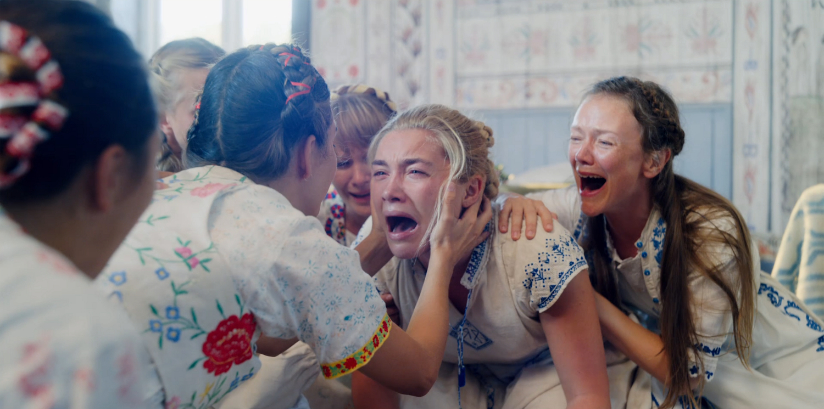
I love how the breathing draws you into the characters’ experiences…
GP: During the Horgans’ ritual suicide scene, while they’re up on the cliff, we had ADR breathing there and we made it louder and louder. Then in the subsequent sequences when the breathing is reverbed out, we’re more in Dani’s head. Then the other jump happens and we use that as an opportunity to go back out to reality. The British couple Simon (Archie Madekwe) and Connie (Ellora Torchia) are running around screaming, “Stop!”
Breathing is a very quiet form of vocalizing. Towards the end of the film after Dani discovers what Christian is doing, the girls in the sleeping quarters are screaming, mimicking what Dani is doing. The other end of breathing is screaming. So we explore the full range there.
Was the singing and chanting performed on set? Or did you record a lot of this afterwards with loop group?
GP: The singing was all recorded on set so it’s sync sound. We did have loop group but we ended up using mostly the on-set singing. I believe there was someone on set who wrote these melodies with Ari and there’s playback of composer Bobby Krlic’s score that eventually was re-recorded in post.
A lot of the singing was already in place and we cleaned it up and made it more immersive sounding. For example, in the temple with Christian during the sex scene we would layer the chanting with other takes of the chanting, put them in different speakers and add more effects. But it was all source sounds from location. There were some wild takes of that, clean versions, and we were able to integrate those into the final track and not have to do ADR in post.
How about the on-location musicians that we see playing their flutes and drums? Was that recorded on set?
GP: There was playback on set but I don’t think the people are actually playing. A lot of that music was re-recorded by composer Bobby Krlic, who did an incredible job with the score. Then in post sound we had to decide what we wanted to sound like score and what we wanted to sound more diegetic. Once we made those decisions, we would go from there and do the necessary processing and panning.
There was a scene early-on in which the sound design and music blend so well. It starts with a car horn in the garage that morphs into sirens and score as the camera follows the line of hoses into the house. Can you tell me about that scene?
GP: It’s a mesh between the score and the sound design. The two dovetail into each other. For that, we actually had a pretty elaborate sound design process. It was this elaborate sound design montage but in the end we decided to pull out the majority of the sound design and let the score take the lead. We featured some isolated Foley, like when the duct tape is pulled off the doors and when the paramedics zip up the body bags. We made those singular Foley sounds extremely loud to accent what’s going on. It was an interesting combination of score and sound design.
Me personally, I always prefer to have score and sound design be as integrated as possible. To me, you shouldn’t really feel a sharp difference between them when possible. I think that’s an effective approach that really worked out here. In many scenes, we create a hybrid of sound design and score, with score that sounds like sound design and sound design that sounds like score. It’s all with the goal of connecting with the audience and eliciting specific emotions from them.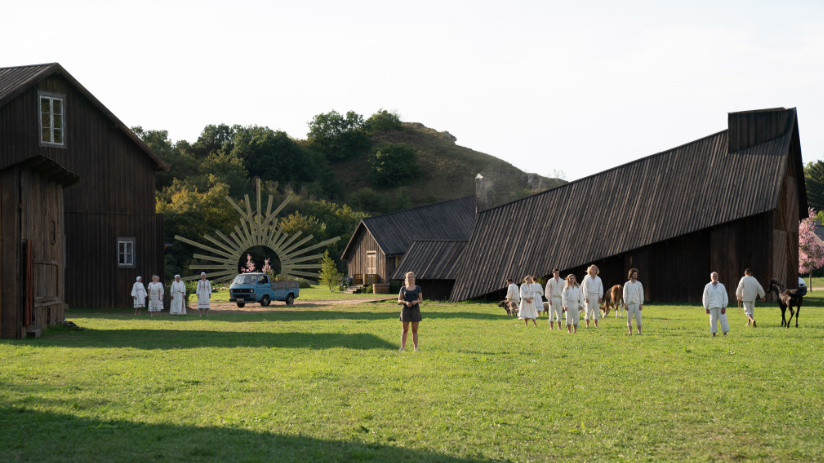
Did you have a favorite scene for sound?
GP: I really like the whole sequence with the Horgans throwing themselves off the cliff. Every time I hear it back and see it it’s very moving for me. It starts with the breathing chant and the couple doing the shots together and then they’re carried up to the cliff, all the way through to the end of the sequence, it’s very emotional. The two characters know what’s going to happen. We use sound there to go back and forth between focusing on the main characters and what’s going on with the ritual. We played around with what people expect to hear. For example, with the hammer hits, one is hyper-realistic sounding and then another one has no sound. It’s a manipulation of expectations and it was a lot of fun.
There’s also the dinner table after the May Queen dance, when Maja (Isabelle Grill) and Christian are about to go off. There are some parts there that even now I can’t tell if it’s score or sound design that’s going on. It’s kind of cool that everything is in harmony, that everyone is pulling in the same direction and it culminated in that scene.
As you were designing the film, were you thinking about the mix? Or, did you do a lot of experimentation in the mix phase?
GP: It’s kind of a hybrid. Much of the sound design was delivered as-is, but on the mix stage we played with panning and reverb. It’s easier to navigate that process with the director because it can be hard to express sound with words. So, we spent a lot of time during the mix messing with that stuff.
In terms of the edit — getting the source sounds down — we had an intensive spotting process. I took a lot of notes on the things that Ari was looking for. We had several meetings throughout the edit period. He’d hear what was being done so nothing was a surprise for him when he came to the mix stage. Ari was involved the whole time and that worked out great. Ari is a really smart guy and he knows how he’s feeling and how he wants to approach things. So we had a great start in establishing the sounds that he wanted during sound editorial.
During the final mix phase at Harbor Picture Company’s West Village facility, we were able to explore ways to make things more intense and more immersive as opposed to fixing things and losing time.
We ended up spending three weeks on the dub stage. It was really convenient because the color was upstairs and picture editorial was a few blocks away. We were able to pass things back and forth with the VFX team and get picture tweaks without having to wait around too long.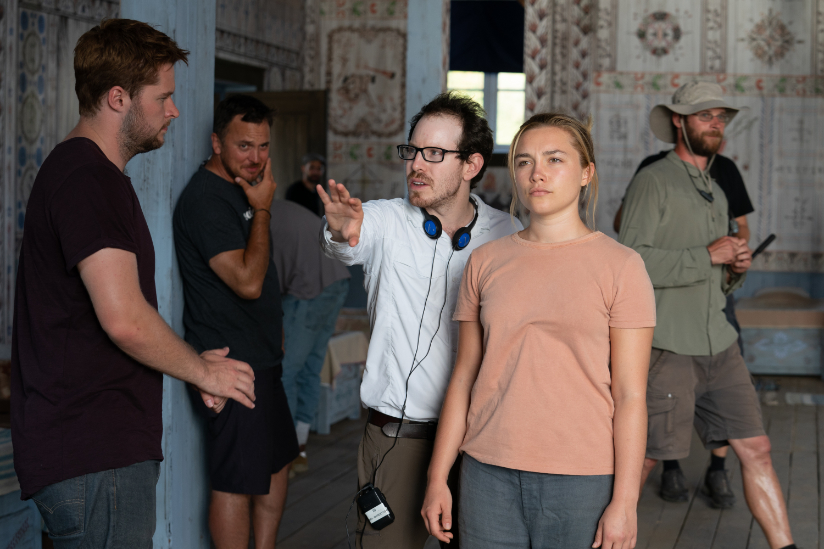
Any final thoughts you’d like to share on the sound of Midsommar?
It was a great collaborative process with everyone bringing ideas to the table.
GP: Midsommar had a really large post sound crew and I wanted to highlight their talents, without which this film would have a completely different sound. There were some editors who I have always wanted to work with but hadn’t had the chance to before, and then there were some people who I work with often. It was a great collaborative process with everyone bringing ideas to the table. Sometimes when the crews get really big things can get chaotic. But everyone was proactive during the process which made things much easier for me, especially because I was supervising the whole thing. It was quite an ambitious project with a lot of things going on. If it wasn’t for everyone being on the same page this process would’ve been more difficult.
On the crew was Ric Schnupp, who mixed the film with me. Ruy Garcia did a lot of the sound design. The Foley team was Matt Haasch and Jay Peck of Stepping Stone Foley. I’ve always admired their work on the Coen brothers’ films. Colin Alexander was another sound editor who was on the stage the whole time. He was essential during the mix process because he knew the score well and was able to pull together stems pretty quickly. He was also helpful in pulling different ADR takes if Ari wanted to explore more options. The dialogue and ADR editors Billy Orrico, Craig Kyllonen, and Sara Stern did a great job cleaning up the production sound and making final mix easier.
A big thanks to Gene Park for giving us a look at the entrancing sound of Midsommar – and to Jennifer Walden for the interview!

